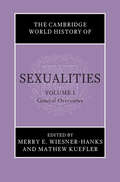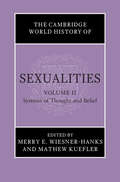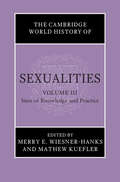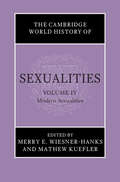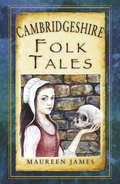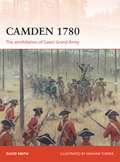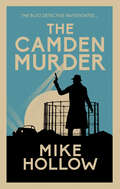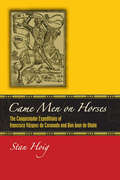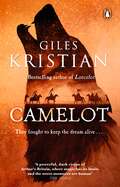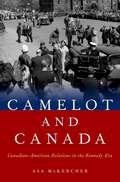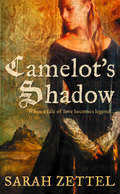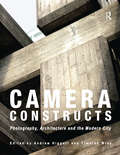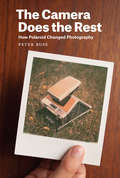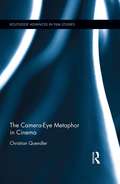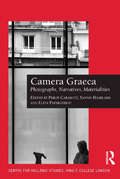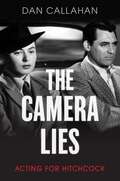- Table View
- List View
The Cambridge World History of Sexualities: Volume 1, General Overviews (The Cambridge World History of Sexualities)
by Wiesner-Hanks, Merry E. Mathew KueflerVolume I offers historiographical surveys and general overviews of central topics in the history of world sexualities. Split across twenty-two chapters, this volume places the history of sexuality in dialogue with anthropology, women's history, LGBTQ+ history, queer theory, and public history, as well as examining the impact Freud and Foucault have had on the history of sexuality. The volume continues by providing overviews on the sexual body, family and marriage, the intersections of sexuality with race and class, male and female homoerotic relations, trans and gender variant sexuality, the sale of sex, sexual violence, sexual science, sexuality and emotion, erotic art and literature, and the material culture of sexuality.
The Cambridge World History of Sexualities: Volume 2, Systems of Thought and Belief (The Cambridge World History of Sexualities)
by Wiesner-Hanks, Merry E. Mathew KueflerVolume II focuses on systems of thought and belief in the history of world sexualities, ranging from early humans to contemporary approaches. Comprising eighteen chapters, this volume opens with a chapter on the evolutionary legacy and then delves into the sexualities of ancient Egypt, the Near East, Greece, and Rome, continuing with pre-modern South Asia, China, and Japan, Africa, the Americas, and Oceania. Chapters include an examination of sexuality in the religious traditions of Buddhism, Judaism, Christianity, and Islam, and also look at more recent approaches, including scientific sex, sexuality in socialism and Marxism, and the intersections between sexuality, feminism, and post-colonialism.
The Cambridge World History of Sexualities: Volume 3, Sites of Knowledge and Practice (The Cambridge World History of Sexualities)
by Wiesner-Hanks, Merry E. Mathew KueflerVolume III provides in-depth analyses of specific times and places in the history of world sexualities, to investigate more closely the lived experience of individuals and groups to reveal the diversity of human sexualities. Comprising twenty-five chapters, this volume covers ancient Athens, Rome, and Constantinople; eighth- and ninth-century Chang'an, ninth- and tenth-century Baghdad, and tenth- through twelfth-century Kyoto; fourteenth- and fifteenth-century Iceland and Florence; sixteenth-century Tenochtitlan, Istanbul, and Geneva; eighteenth-century Edo, Paris, and Philadelphia; nineteenth-century Cairo, London, and Manila; late nineteenth- and early twentieth-century Lagos, Bombay, Buenos Aires, and Berlin, and twentieth-century Sydney, Toronto, Shanghai, and Rio de Janeiro. Broad in range, this volume sheds light on continuities and changes in world sexualities across time and space.
The Cambridge World History of Sexualities: Volume 4, Modern Sexualities (The Cambridge World History of Sexualities)
by Wiesner-Hanks, Merry E. Mathew KueflerVolume IV examines the intersections of modernity and human sexuality through the forces, ideas, and events that have shaped the modern world. Through eighteen chapters, this volume examines connections between sexuality and the defining forces of modern global history including capitalism, colonialism, migration, consumerism, and war; sexuality in modern literature and print media; sexuality in dictatorships and democracies; and cultural changes such as sex education and the sexual revolution. The volume ends with discussions of the difficult issues we in the modern world continue to face, such as restrictions on reproductive rights, sex tourism, STDs and AIDS, sex trafficking, domestic violence, and illiberal attacks on sexuality.
Cambridgeshire Folk Tales (Folk Tales Ser.)
by Maureen JamesModern-day Cambridgeshire is a county of diverse landscapes: from the elegance of the university city and the rural delights of the old county of Huntingdonshire Isle of Ely, each district has its own identity and its own stories. Explore the antics of the inhabitants of the past, including Hereward the Saxon hero; the Fenland giant Tom Hickathrift; the pious Bricstan of Chatteris; the raconteur and skater Chaffe Legge; and Mr Leech, who was carried off by the Devil. You will also discover the hidden history of the area, including how the secret Brotherhood of the Grey Goose Feather helped King Charles I, and what really happened to King John’s treasure. These entertaining tales will delight readers both within Cambridgeshire and elsewhere.
Camden 1780: The annihilation of Gates’ Grand Army (Campaign #292)
by David Smith Graham TurnerAs the American Revolution continued, the British refocused their fight on the southern colonies in the hopes of triggering an outbreak of loyalism that would sweep the rebels aside. Under Sir Henry Clinton they captured Savannah at the end of 1778, and Charleston in May 1780, with Lord Cornwallis being left in command with just 8,500 men under him. Too thinly spread to guard the 15,000 square miles he was responsible for, Cornwallis went on the offensive, invading North Carolina and using Camden as a launch pad. This new history reveals how Cornwallis was able to use his aggressive strategy to great effect and how the overconfidence of the re-formed American forces under Horatio Gates was to result in a shocking defeat on the night of 15 August 1780 – a defeat that would allow Cornwallis to push deep into North Carolina the following year, where he would only be stopped by the American victory at Yorktown.
Camden 1780: The annihilation of Gates’ Grand Army (Campaign #292)
by Graham Turner David SmithAs the American Revolution continued, the British refocused their fight on the southern colonies in the hopes of triggering an outbreak of loyalism that would sweep the rebels aside. Under Sir Henry Clinton they captured Savannah at the end of 1778, and Charleston in May 1780, with Lord Cornwallis being left in command with just 8,500 men under him. Too thinly spread to guard the 15,000 square miles he was responsible for, Cornwallis went on the offensive, invading North Carolina and using Camden as a launch pad. This new history reveals how Cornwallis was able to use his aggressive strategy to great effect and how the overconfidence of the re-formed American forces under Horatio Gates was to result in a shocking defeat on the night of 15 August 1780 – a defeat that would allow Cornwallis to push deep into North Carolina the following year, where he would only be stopped by the American victory at Yorktown.
The Camden Murder (Blitz Detective #7)
by Mike HollowAs dawn breaks on a chilly morning in November 1940, a car is found ablaze in an abandoned builder's yard a stone's throw from the Regent's Canal in Camden Town, north London. In the burnt-out vehicle police find the charred remains of a body. The victim is Les Latham, a commercial traveller for the Barings confectionery company. He liked to be known as Lucky Les, but it seems his luck has finally run out. DI John Jago discovers among Latham's belongings a mysterious photograph and some suspicious-looking petrol ration books that set Jago off on a murky trail of deceit, corruption and murder.
Came Men on Horses: The Conquistador Expeditions of Francisco Vásquez de Coronado and Don Juan de Oñate
by Stan HoigGuided by myths of golden cities and worldly rewards, policy makers, conquistador leaders, and expeditionary aspirants alike came to the new world in the sixteenth century and left it a changed land. Came Men on Horses follows two conquistadors--Francisco Vázquez de Coronado and Don Juan de Oñate--on their journey across the southwest. Driven by their search for gold and silver, both Coronado and Oñate committed atrocious acts of violence against the Native Americans, and fell out of favor with the Spanish monarchy. Examining the legacy of these two conquistadors Hoig attempts to balance their brutal acts and selfish motivations with the historical significance and personal sacrifice of their expeditions. Rich human details and superb story-telling make Came Men on Horses a captivating narrative scholars and general readers alike will appreciate.
Camelot: The epic new novel from the author of Lancelot
by Giles Kristian'So beautiful, so haunting . . . bitingly real . . . Giles has given us a vital, glorious story: rich, rewarding, and utterly revealing of our times' Manda ScottFollowing his acclaimed Sunday Times bestseller, Lancelot, Giles Kristian's new novel returns us to the realms of Arthurian legend . . . Britain is a land riven by anarchy, slaughter, famine, filth and darkness. Its armies are destroyed, its heroes dead, or missing. Arthur and Lancelot fell in the last great battle and Merlin has not been seen these past ten years. Now, the Saxons are gathering again, their warbands stalk the land, their king seeks dominion. As for the lords and kings of Britain, they look only to their own survival and will not unite as they once did under Arthur and his legendary sword Excalibur.But in an isolated monastery in the marshes of Avalon, a novice of the order is preparing to take his vows when the life he has known is suddenly turned upside down in a welter of blood. Two strangers - the wild-spirited, Saxon-killing Iselle and the ageing warrior Gawain - will pluck the young man from the wreckage of his simple existence. Together, they will seek the last druid and the cauldron of a god. And the young man must come to terms with his legacy and fate as the son of the most celebrated yet most infamous of Arthur's warriors: Lancelot. For this is the story of Galahad, Lancelot’s son – the reluctant warrior who dared to keep the dream of Camelot alive . . . Acclaim for Lancelot: 'A masterpiece.' Conn Iggulden 'Stands head and shoulders above the rest.' Manda Scott'Glorious. Tragic. Lyrical. Totally gripping.' Ben Kane'A gorgeous, rich retelling.' The Times'An extraordinary writer . . . an exceptional book.' Dr Janina Ramirez
Camelot and Canada: Canadian-American Relations in the Kennedy Era
by Asa McKercherIn 1958 Senator John F. Kennedy of Massachusetts proclaimed at the University of New Brunswick that "Canada and the United States have carefully maintained the good fences that help make them good neighbours." He could not have foreseen that his presidency would be marked not just by some of the tensest moments of the Cold War but also by the most contentious moments in the Canadian-American relationship. Indeed, the 1963 Canadian federal election was marked by charges that the US government had engineered a plot to oust John Diefenbaker, Canada's nationalist prime minister. Camelot and Canada explores political, economic, and military elements in Canada-US relations in the early 1960s. Asa McKercher challenges the prevailing view that US foreign policymakers, including President Kennedy, were imperious in their conduct toward Canada. Rather, he shows that the period continued to be marked by the special diplomatic relationship that characterized the early postwar years. Even as Diefenbaker's government pursued distinct foreign and economic policies, American officials acknowledged that Canadian objectives legitimately differed from their own and adjusted their policies accordingly. Moreover, for all its bluster, Ottawa rarely moved without weighing the impact that its initiatives might have on Washington. At the same time, McKercher illustrates that there were significant strains on the bilateral relationship, which occurred as a result of mounting doubts in Canada about US leadership in the Cold War, growing Canadian nationalism, and Canadian concern over their country's close economic, military, and cultural ties with the United States. While personal clashes between the two leaders have become mythologized by historians and the public alike, the special relationship between their governments continued to function.
Camelot and Canada: Canadian-American Relations in the Kennedy Era
by Asa McKercherIn 1958 Senator John F. Kennedy of Massachusetts proclaimed at the University of New Brunswick that "Canada and the United States have carefully maintained the good fences that help make them good neighbours." He could not have foreseen that his presidency would be marked not just by some of the tensest moments of the Cold War but also by the most contentious moments in the Canadian-American relationship. Indeed, the 1963 Canadian federal election was marked by charges that the US government had engineered a plot to oust John Diefenbaker, Canada's nationalist prime minister. Camelot and Canada explores political, economic, and military elements in Canada-US relations in the early 1960s. Asa McKercher challenges the prevailing view that US foreign policymakers, including President Kennedy, were imperious in their conduct toward Canada. Rather, he shows that the period continued to be marked by the special diplomatic relationship that characterized the early postwar years. Even as Diefenbaker's government pursued distinct foreign and economic policies, American officials acknowledged that Canadian objectives legitimately differed from their own and adjusted their policies accordingly. Moreover, for all its bluster, Ottawa rarely moved without weighing the impact that its initiatives might have on Washington. At the same time, McKercher illustrates that there were significant strains on the bilateral relationship, which occurred as a result of mounting doubts in Canada about US leadership in the Cold War, growing Canadian nationalism, and Canadian concern over their country's close economic, military, and cultural ties with the United States. While personal clashes between the two leaders have become mythologized by historians and the public alike, the special relationship between their governments continued to function.
Camelot’s Shadow (The\paths To Camelot Ser. #Bk. 1)
by Sarah ZettelA stunning tale of romance and magic set against the legendary backdrop of King Arthur’s court.
Camera Constructs: Photography, Architecture and the Modern City
by Andrew Higgott Timothy WrayPhotography and architecture have a uniquely powerful resonance - architectural form provides the camera with the subject for some of its most compelling imagery, while photography profoundly influences how architecture is represented, imagined and produced. Camera Constructs is the first book to reflect critically on the varied interactions of the different practices by which photographers, artists, architects, theorists and historians engage with the relationship of the camera to architecture, the city and the evolution of Modernism. The title thus on the one hand opposes the medium of photography and the materiality of construction - but on the other can be read as saying that the camera invariably constructs what it depicts: the photograph is not a simple representation of an external reality, but constructs its own meanings and reconstructs its subjects. Twenty-three essays by a wide range of historians and theorists are grouped under the themes of ’Modernism and the Published Photograph’, ’Architecture and the City Re-imagined’, ’Interpretative Constructs’ and ’Photography in Design Practices.’ They are preceded by an Introduction that comprehensively outlines the subject and elaborates on the diverse historical and theoretical contexts of the authors’ approaches. Camera Constructs provides a rich and highly original analysis of the relationship of photography to built form from the early modern period to the present day.
Camera Constructs: Photography, Architecture and the Modern City
by Andrew Higgott Timothy WrayPhotography and architecture have a uniquely powerful resonance - architectural form provides the camera with the subject for some of its most compelling imagery, while photography profoundly influences how architecture is represented, imagined and produced. Camera Constructs is the first book to reflect critically on the varied interactions of the different practices by which photographers, artists, architects, theorists and historians engage with the relationship of the camera to architecture, the city and the evolution of Modernism. The title thus on the one hand opposes the medium of photography and the materiality of construction - but on the other can be read as saying that the camera invariably constructs what it depicts: the photograph is not a simple representation of an external reality, but constructs its own meanings and reconstructs its subjects. Twenty-three essays by a wide range of historians and theorists are grouped under the themes of ’Modernism and the Published Photograph’, ’Architecture and the City Re-imagined’, ’Interpretative Constructs’ and ’Photography in Design Practices.’ They are preceded by an Introduction that comprehensively outlines the subject and elaborates on the diverse historical and theoretical contexts of the authors’ approaches. Camera Constructs provides a rich and highly original analysis of the relationship of photography to built form from the early modern period to the present day.
The Camera Does the Rest: How Polaroid Changed Photography
by Peter BuseIn a world where nearly everyone has a cellphone camera capable of zapping countless instant photos, it can be a challenge to remember just how special and transformative Polaroid photography was in its day. And yet, there’s still something magical for those of us who recall waiting for a Polaroid picture to develop. Writing in the context of two Polaroid Corporation bankruptcies, not to mention the obsolescence of its film, Peter Buse argues that Polaroid was, and is, distinguished by its process—by the fact that, as the New York Times put it in 1947, “the camera does the rest.” Polaroid was often dismissed as a toy, but Buse takes it seriously, showing how it encouraged photographic play as well as new forms of artistic practice. Drawing on unprecedented access to the archives of the Polaroid Corporation, Buse reveals Polaroid as photography at its most intimate, where the photographer, photograph, and subject sit in close proximity in both time and space—making Polaroid not only the perfect party camera but also the tool for frankly salacious pictures taking. Along the way, Buse tells the story of the Polaroid Corporation and its ultimately doomed hard-copy wager against the rising tide of digital imaging technology. He explores the continuities and the differences between Polaroid and digital, reflecting on what Polaroid can tell us about how we snap photos today. Richly illustrated, The Camera Does the Rest will delight historians, art critics, analog fanatics, photographers, and all those who miss the thrill of waiting to see what develops.
The Camera Does the Rest: How Polaroid Changed Photography
by Peter BuseIn a world where nearly everyone has a cellphone camera capable of zapping countless instant photos, it can be a challenge to remember just how special and transformative Polaroid photography was in its day. And yet, there’s still something magical for those of us who recall waiting for a Polaroid picture to develop. Writing in the context of two Polaroid Corporation bankruptcies, not to mention the obsolescence of its film, Peter Buse argues that Polaroid was, and is, distinguished by its process—by the fact that, as the New York Times put it in 1947, “the camera does the rest.” Polaroid was often dismissed as a toy, but Buse takes it seriously, showing how it encouraged photographic play as well as new forms of artistic practice. Drawing on unprecedented access to the archives of the Polaroid Corporation, Buse reveals Polaroid as photography at its most intimate, where the photographer, photograph, and subject sit in close proximity in both time and space—making Polaroid not only the perfect party camera but also the tool for frankly salacious pictures taking. Along the way, Buse tells the story of the Polaroid Corporation and its ultimately doomed hard-copy wager against the rising tide of digital imaging technology. He explores the continuities and the differences between Polaroid and digital, reflecting on what Polaroid can tell us about how we snap photos today. Richly illustrated, The Camera Does the Rest will delight historians, art critics, analog fanatics, photographers, and all those who miss the thrill of waiting to see what develops.
The Camera Does the Rest: How Polaroid Changed Photography
by Peter BuseIn a world where nearly everyone has a cellphone camera capable of zapping countless instant photos, it can be a challenge to remember just how special and transformative Polaroid photography was in its day. And yet, there’s still something magical for those of us who recall waiting for a Polaroid picture to develop. Writing in the context of two Polaroid Corporation bankruptcies, not to mention the obsolescence of its film, Peter Buse argues that Polaroid was, and is, distinguished by its process—by the fact that, as the New York Times put it in 1947, “the camera does the rest.” Polaroid was often dismissed as a toy, but Buse takes it seriously, showing how it encouraged photographic play as well as new forms of artistic practice. Drawing on unprecedented access to the archives of the Polaroid Corporation, Buse reveals Polaroid as photography at its most intimate, where the photographer, photograph, and subject sit in close proximity in both time and space—making Polaroid not only the perfect party camera but also the tool for frankly salacious pictures taking. Along the way, Buse tells the story of the Polaroid Corporation and its ultimately doomed hard-copy wager against the rising tide of digital imaging technology. He explores the continuities and the differences between Polaroid and digital, reflecting on what Polaroid can tell us about how we snap photos today. Richly illustrated, The Camera Does the Rest will delight historians, art critics, analog fanatics, photographers, and all those who miss the thrill of waiting to see what develops.
The Camera Does the Rest: How Polaroid Changed Photography
by Peter BuseIn a world where nearly everyone has a cellphone camera capable of zapping countless instant photos, it can be a challenge to remember just how special and transformative Polaroid photography was in its day. And yet, there’s still something magical for those of us who recall waiting for a Polaroid picture to develop. Writing in the context of two Polaroid Corporation bankruptcies, not to mention the obsolescence of its film, Peter Buse argues that Polaroid was, and is, distinguished by its process—by the fact that, as the New York Times put it in 1947, “the camera does the rest.” Polaroid was often dismissed as a toy, but Buse takes it seriously, showing how it encouraged photographic play as well as new forms of artistic practice. Drawing on unprecedented access to the archives of the Polaroid Corporation, Buse reveals Polaroid as photography at its most intimate, where the photographer, photograph, and subject sit in close proximity in both time and space—making Polaroid not only the perfect party camera but also the tool for frankly salacious pictures taking. Along the way, Buse tells the story of the Polaroid Corporation and its ultimately doomed hard-copy wager against the rising tide of digital imaging technology. He explores the continuities and the differences between Polaroid and digital, reflecting on what Polaroid can tell us about how we snap photos today. Richly illustrated, The Camera Does the Rest will delight historians, art critics, analog fanatics, photographers, and all those who miss the thrill of waiting to see what develops.
The Camera-Eye Metaphor in Cinema (Routledge Advances in Film Studies)
by Christian QuendlerThis book explores the cultural, intellectual, and artistic fascination with camera-eye metaphors in film culture of the twentieth century. By studying the very metaphor that cinema lives by, it provides a rich and insightful map of our understanding of cinema and film styles and shows how cinema shapes our understanding of the arts and media. As current new media technologies are attempting to shift the identity of cinema and moving imagery, it is hard to overstate the importance of this metaphor for our understanding of the modalities of vision. In what guises does the "camera eye" continue to survive in media that is called new?
The Camera-Eye Metaphor in Cinema (Routledge Advances in Film Studies)
by Christian QuendlerThis book explores the cultural, intellectual, and artistic fascination with camera-eye metaphors in film culture of the twentieth century. By studying the very metaphor that cinema lives by, it provides a rich and insightful map of our understanding of cinema and film styles and shows how cinema shapes our understanding of the arts and media. As current new media technologies are attempting to shift the identity of cinema and moving imagery, it is hard to overstate the importance of this metaphor for our understanding of the modalities of vision. In what guises does the "camera eye" continue to survive in media that is called new?
Camera Graeca: Photographs, Narratives, Materialities (Publications of the Centre for Hellenic Studies, King's College London #16)
by Philip Carabott Yannis Hamilakis Eleni PapargyriouWhile written sources on the history of Greece have been studied extensively, no systematic attempt has been made to examine photography as an important cultural and material process. This is surprising, given that Modern Greece and photography are almost peers: both are cultural products of the 1830s, and both actively converse with modernity. Camera Graeca: Photographs, Narratives, Materialities fills this lacuna. It is the first inter-disciplinary volume to examine critically and in a theorised manner the entanglement of Greece with photography. The book argues that photographs and the photographic process as a whole have been instrumental in the reproduction of national imagination, in the consolidation of the nation-building process, and in the generation and dissemination of state propaganda. At the same time, it is argued that the photographic field constitutes a site of memory and counter-memory, where various social actors intervene actively and stake their discursive, material, and practical claims. As such, the volume will be of relevance to scholars and photographers, worldwide. The book is divided into four, tightly integrated parts. The first, ’Imag(in)ing Greece’, shows that the consolidation of Greek national identity constituted a material-cum-representational process, the projection of an imagery, although some photographic production sits uneasily within the national canon, and may even undermine it. The second part, ’Photographic narratives, alternative histories’, demonstrates the narrative function of photographs in diary-keeping and in photobooks. It also examines the constitution of spectatorship through the combination of text and image, and the role of photography as a process of materializing counter-hegemonic discourses and practices. The third part, ’Photographic matter-realities’, foregrounds the role of photography in materializing state propaganda, national memory, and war. The final part, ’Photographic ethnographiesâ
Camera Graeca: Photographs, Narratives, Materialities (Publications of the Centre for Hellenic Studies, King's College London #16)
by Philip Carabott Yannis Hamilakis Eleni PapargyriouWhile written sources on the history of Greece have been studied extensively, no systematic attempt has been made to examine photography as an important cultural and material process. This is surprising, given that Modern Greece and photography are almost peers: both are cultural products of the 1830s, and both actively converse with modernity. Camera Graeca: Photographs, Narratives, Materialities fills this lacuna. It is the first inter-disciplinary volume to examine critically and in a theorised manner the entanglement of Greece with photography. The book argues that photographs and the photographic process as a whole have been instrumental in the reproduction of national imagination, in the consolidation of the nation-building process, and in the generation and dissemination of state propaganda. At the same time, it is argued that the photographic field constitutes a site of memory and counter-memory, where various social actors intervene actively and stake their discursive, material, and practical claims. As such, the volume will be of relevance to scholars and photographers, worldwide. The book is divided into four, tightly integrated parts. The first, ’Imag(in)ing Greece’, shows that the consolidation of Greek national identity constituted a material-cum-representational process, the projection of an imagery, although some photographic production sits uneasily within the national canon, and may even undermine it. The second part, ’Photographic narratives, alternative histories’, demonstrates the narrative function of photographs in diary-keeping and in photobooks. It also examines the constitution of spectatorship through the combination of text and image, and the role of photography as a process of materializing counter-hegemonic discourses and practices. The third part, ’Photographic matter-realities’, foregrounds the role of photography in materializing state propaganda, national memory, and war. The final part, ’Photographic ethnographiesâ
The Camera Lies: Acting for Hitchcock
by Dan CallahanThe first book on Hitchcock that focuses exclusively on his work with actors Alfred Hitchcock is said to have once remarked, "Actors are cattle," a line that has stuck in the public consciousness ever since. For Hitchcock, acting was a matter of contrast and counterpoint, valuing subtlety and understatement over flashiness. He felt that the camera was duplicitous, and directed actors to look and act conversely. In The Camera Lies, author Dan Callahan spotlights the many nuances of Hitchcock's direction throughout his career, from Cary Grant in Notorious (1946) to Janet Leigh in Psycho (1960). Delving further, he examines the ways that sex and sexuality are presented through Hitchcock's characters, reflecting the director's own complex relationship with sexuality. Detailing the fluidity of acting -- both what it means to act on film and how the process varies in each actor's career -- Callahan examines the spectrum of treatment and direction Hitchcock provided well- and lesser-known actors alike, including Ingrid Bergman, Henry Kendall, Joan Barry, Robert Walker, Jessica Tandy, Kim Novak, and Tippi Hedren. As Hitchcock believed, the best actor was one who could "do nothing well" - but behind an outward indifference to his players was a sophisticated acting theorist who often drew out great performances. The Camera Lies unpacks Hitchcock's legacy both as a director who continuously taught audiences to distrust appearance, and as a man with an uncanny insight into the human capacity for deceit and misinterpretation.
The Camera Lies: Acting for Hitchcock
by Dan CallahanThe first book on Hitchcock that focuses exclusively on his work with actors Alfred Hitchcock is said to have once remarked, "Actors are cattle," a line that has stuck in the public consciousness ever since. For Hitchcock, acting was a matter of contrast and counterpoint, valuing subtlety and understatement over flashiness. He felt that the camera was duplicitous, and directed actors to look and act conversely. In The Camera Lies, author Dan Callahan spotlights the many nuances of Hitchcock's direction throughout his career, from Cary Grant in Notorious (1946) to Janet Leigh in Psycho (1960). Delving further, he examines the ways that sex and sexuality are presented through Hitchcock's characters, reflecting the director's own complex relationship with sexuality. Detailing the fluidity of acting -- both what it means to act on film and how the process varies in each actor's career -- Callahan examines the spectrum of treatment and direction Hitchcock provided well- and lesser-known actors alike, including Ingrid Bergman, Henry Kendall, Joan Barry, Robert Walker, Jessica Tandy, Kim Novak, and Tippi Hedren. As Hitchcock believed, the best actor was one who could "do nothing well" - but behind an outward indifference to his players was a sophisticated acting theorist who often drew out great performances. The Camera Lies unpacks Hitchcock's legacy both as a director who continuously taught audiences to distrust appearance, and as a man with an uncanny insight into the human capacity for deceit and misinterpretation.
